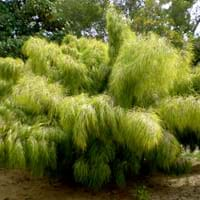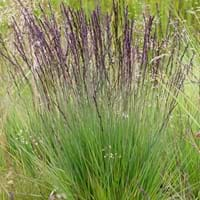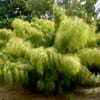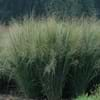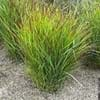Life Span
Perennial
Perennial
Type
Broadleaf Evergreen, Grass
Grass
Origin
Mexico
Asia, Europe, North Africa
Types
Otatea acuminata ssp. acuminata, Otatea acuminata ssp. aztecorum, Otatea acuminata 'Dwarf'
purple moor-grass 'Moorhexe', variegated purple moor-grass
Habitat
Subtropical climates, tropical environments
Boggy areas, Dry and Young forest Heaths, Lowland
USDA Hardiness Zone
9-12
4-8
AHS Heat Zone
10 - 7
9 - 1
Sunset Zone
H1, H2, 9, 14, 15, 16, 19, 20, 21, 22, 23, 24
1a, 1b, 2a, 2b, 3a, 3b, 4, 5, 6, 7, 8, 9, 14, 15, 16, 17
Habit
Weeping
Clump-Forming
Flower Color
Non Flowering Plant
Dark Purple
Flower Color Modifier
Bicolor
Bicolor
Fruit Color
Non Fruiting Plant
Non Fruiting Plant
Leaf Color in Spring
Green, Yellow green
Green, Dark Green
Leaf Color in Summer
Light Green
Light Green
Leaf Color in Fall
Green, Yellow green
Green, Yellow green, Gold
Leaf Color in Winter
Green, Yellow green
Tan
Leaf Shape
Long linear and narrow
Needle like
Plant Season
Spring, Summer, Fall, Winter
Spring, Summer, Fall, Winter
Sunlight
Full Sun, Partial Sun, Partial shade
Full Sun, Partial Sun
Type of Soil
Clay, Loam, Sand
Clay, Loam, Sand
The pH of Soil
Acidic, Neutral
Acidic, Neutral
Soil Drainage
Well drained
Average
Bloom Time
Not Available
Late Spring, Summer, Late Summer, Early Fall, Fall
Tolerances
Drought
Not Available
Where to Plant?
Container, Ground
Ground, Pot
How to Plant?
Divison
Divison, Transplanting, Vegetative Reproduction
Plant Maintenance
Medium
Low
Watering Requirements
Average Water Needs, Never Over-water
Requires regular watering, Water more frequently during periods of extreme drought
In Summer
Lots of watering
Lots of watering
In Spring
Moderate
Moderate
In Winter
Average Water
Average Water
Soil pH
Acidic, Neutral
Acidic, Neutral
Soil Type
Clay, Loam, Sand
Clay, Loam, Sand
Soil Drainage Capacity
Well drained
Average
Sun Exposure
Full Sun, Partial Sun, Partial shade
Full Sun, Partial Sun
Pruning
Prune every year, Prune to control growth, Remove dead or diseased plant parts
Prune in winter, Remove damaged leaves, Remove dead branches, Remove dead leaves
Fertilizers
All-Purpose Liquid Fertilizer, Requires high amount of nitrogen
No need to fertilize every year
Pests and Diseases
Aphids, Mealybugs
Pests and diseases free
Plant Tolerance
Drought
Not Available
Flower Petal Number
Single
Single
Foliage Texture
Fine
Fine
Foliage Sheen
Matte
Matte
Attracts
Mealybugs
Not Available
Allergy
Skin irritation
Not Available
Aesthetic Uses
Landscape Designing, Showy Purposes
Showy Purposes, Water gardening
Beauty Benefits
No Beauty Benefits
Not Available
Environmental Uses
Air purification, Windbreak
No fertilizer, pesticides, or herbicides needed
Medicinal Uses
No Medicinal Use
No Medicinal Use
Part of Plant Used
Whole plant
Whole plant
Other Uses
Used as Ornamental plant
Used as Ornamental plant
Used As Indoor Plant
No
No
Used As Outdoor Plant
Yes
Yes
Garden Design
Container, Feature Plant, Foundation, Mixed Border, Tropical
Container, Foundation, Mixed Border
Botanical Name
OTATEA acuminata
Molinia caerulea
Common Name
Clumping Bamboo, Mexican Weeping Bamboo
purple moor-grass
In Hindi
मैक्सिकन बांस
बैंगनी दलदल घास
In German
Mexican Bambus
Pfeifengras
In French
Bamboo mexicaine
pourpre lande-grass
In Spanish
bambú mexicana
púrpura amarra-hierba
In Greek
Μεξικού μπαμπού
μωβ Moor-γρασίδι
In Portuguese
Bamboo Mexican
purple moor-grass
In Polish
Mexican Bamboo
fioletowy Moor-trawa
In Latin
Mexicanus Bamboo
Maurus herba-purpura,
Phylum
Not Available
Magnoliophyta
Class
Not Available
Liliopsida
Clade
Angiosperms, Commelinids, Monocots
Angiosperms, Commelinids, Monocots
Tribe
Not Available
Not Available
Subfamily
Not Available
Not Available
Number of Species
Not Available
Not Available
Season and Care of Mexican Bamboo and Molinia Caerulea
Season and care of Mexican Bamboo and Molinia Caerulea is important to know. While considering everything about Mexican Bamboo and Molinia Caerulea Care, growing season is an essential factor. Mexican Bamboo season is Spring, Summer, Fall and Winter and Molinia Caerulea season is Spring, Summer, Fall and Winter. The type of soil for Mexican Bamboo is Clay, Loam, Sand and for Molinia Caerulea is Clay, Loam, Sand while the PH of soil for Mexican Bamboo is Acidic, Neutral and for Molinia Caerulea is Acidic, Neutral.
Mexican Bamboo and Molinia Caerulea Physical Information
Mexican Bamboo and Molinia Caerulea physical information is very important for comparison. Mexican Bamboo height is 240.00 cm and width 30.00 cm whereas Molinia Caerulea height is 120.00 cm and width 30.00 cm. The color specification of Mexican Bamboo and Molinia Caerulea are as follows:
Mexican Bamboo flower color: Non Flowering Plant
Mexican Bamboo leaf color: Green and Yellow green
Molinia Caerulea flower color: Dark Purple
- Molinia Caerulea leaf color: Green and Dark Green
Care of Mexican Bamboo and Molinia Caerulea
Care of Mexican Bamboo and Molinia Caerulea include pruning, fertilizers, watering etc. Mexican Bamboo pruning is done Prune every year, Prune to control growth and Remove dead or diseased plant parts and Molinia Caerulea pruning is done Prune in winter, Remove damaged leaves, Remove dead branches and Remove dead leaves. In summer Mexican Bamboo needs Lots of watering and in winter, it needs Average Water. Whereas, in summer Molinia Caerulea needs Lots of watering and in winter, it needs Average Water.
